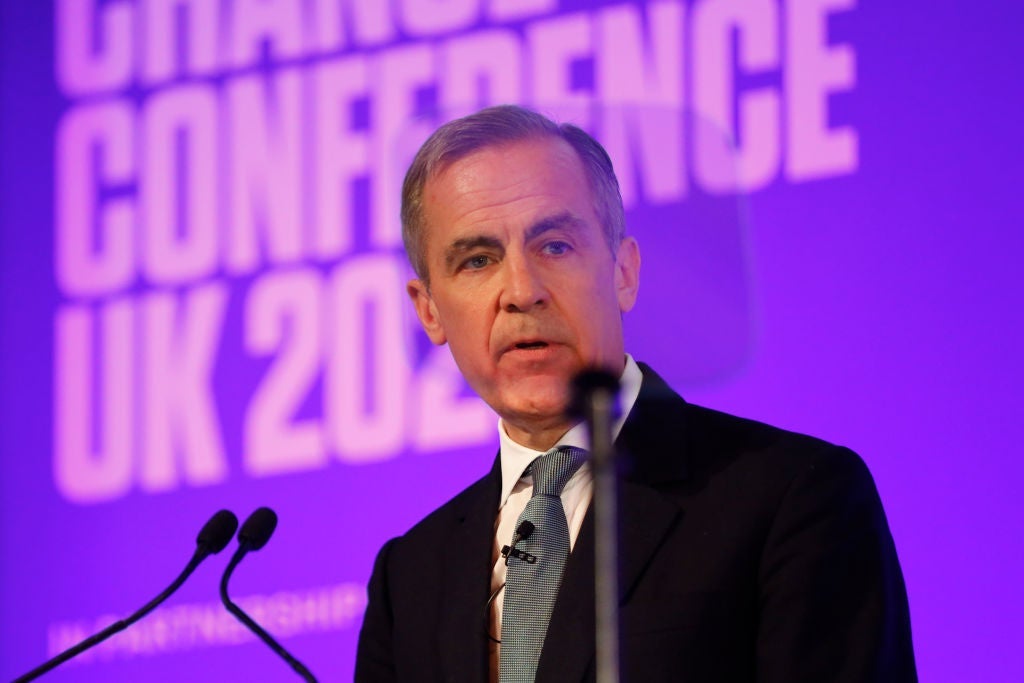
“We need transition plans,” said Mark Carney, former governor of the Bank of England and chair of the Glasgow Financial Alliance for Net Zero (GFANZ), on 20 February. “It is transition, transition, transition – getting capital to where the emissions are and getting them down.”
Addressing a conference organised by the International Sustainability Standards Board (ISSB), Carney argued that the “bulk of capital” must now flow to high-emitting companies that are in the process of aligning their business with net zero. However, to ensure this money has the intended impact, financial institutions will have to carefully scrutinise these companies’ transition plans, which must verify and operationalise climate commitments.
A recent analysis published by global non-profit the Carbon Disclosure Project (CDP), which sets the global standard for environmental reporting for companies, cities and countries, reveals that credible corporate transition plans are few and far between. This is cause for concern for financial institutions, which will only be able to meet their own net-zero targets if the companies they lend to and invest in are able to transition.
In its February 2022 assessment of the climate transition plans of more than 18,600 companies (representing 50% of total market cap), the CDP found that of the 4,000 that claim to have a climate transition plan in place, only 81 (0.4%) have plans that it deems fully credible, meaning they meet all of the CDP’s 21 key indicators for a credible climate transition plan.
Plans may not be deemed credible if they do not: have sufficient board-level oversight, conduct robust scenario analysis or financial planning for a lower carbon business, or have science-based targets to meet their decarbonisation goals.
A separate report published the same day by the CDP in conjunction with management consultancy Oliver Wyman focused on Europe, revealing that just 5% of European companies have credible climate transition plans.
How well do you really know your competitors?
Access the most comprehensive Company Profiles on the market, powered by GlobalData. Save hours of research. Gain competitive edge.

Thank you!
Your download email will arrive shortly
Not ready to buy yet? Download a free sample
We are confident about the unique quality of our Company Profiles. However, we want you to make the most beneficial decision for your business, so we offer a free sample that you can download by submitting the below form
By GlobalDataPoor transition plans: €1.8trn at risk
Since 36 out of the 50 top banks in Europe have committed to net zero under the Net-Zero Banking Alliance (the banking arm of GFANZ), the CDP sees “a mismatch is emerging” between these banks and their corporate clients whose plans remain undeveloped.
As a result, the CDP warns, companies unable to credibly demonstrate their transition readiness are increasingly likely to struggle to access funding as financial institutions start to scrutinise plans more carefully in order to meet their own net-zero targets.
More than 80% of financial institutions in Europe reported to the CDP last year that they were assessing the 1.5°C alignment of at least some of their clients, with the majority planning to increase the scope of their assessment across a larger part of their portfolio.
Noting that some banks have already committed to stop lending to companies without credible transition plans in key sectors, the CDP calculates that an estimated €900bn ($955bn) to €1.8trn in corporate debt is “at risk” of being snubbed by banks in future years.
Lack of science-based targets
While not all financial institutions have a plan of their own in place, the data shows that the financial sector has the lowest share (22%) of companies that meet “few” (less than seven) of the 21 indicators.
By contrast, three-quarters of companies in manufacturing meet less than seven of the indicators.
Key to creating a credible transition plan is setting both long and short-term emissions reductions targets, yet just 672 companies out of the 18,600 (<4%) are assessed by the CDP as having credible emissions reductions targets in place. Three-quarters of those are signed up with the Science-Based Targets initiative (SBTi), which the CDP calls the “gold standard” for target setting.
SBTi data shows that the number of companies setting science-based targets is currently on the rise, with industrials leading the pack, although there are notable gaps: oil and gas producers, for example, are yet to get a methodology for setting emissions reductions targets under the SBTi, with the SBTi’s guidance for the sector still at the draft stage.
Just one fossil fuel company in the CDP’s global report meets all 21 of its credible climate transition plan indicators. The CDP highlights the sector as a particular cause for concern, warning that “to negate the risk of not meeting our global climate ambitions, more pressure needs to be applied to organizations in the fossil fuels industry”.
This pressure is slowly ramping up, from all directions. As Carney himself noted, ensuring that portfolio companies implement transition plans is high on the agenda for GFANZ in 2023. In the second half of last year, GFANZ published a series of guidance documents on transition planning, including Expectations for Real-economy Transition Plans, aimed at corporates, and a Financial Institution Net-Zero Transition Planning framework with guidance on measuring portfolio alignment.
This guidance is only voluntary, however, and in its release GFANZ stated that “while finance plays an essential role, it cannot substitute for government policy, and certain responsibilities cannot be shifted to the financial sector”. It calls on “policymakers, regulators, and standard-setters” to produce rules and guidance around net-zero transition plans.
Regulation is afoot
Companies across the globe that have not yet started working on transition plans will soon receive a nasty wake-up call as regulations mandating them are rolled out across multiple jurisdictions. By the end of 2023, the UK's Transition Plan Taskforce is expected to produce mandatory standards for listed companies and financial organisations to ensure comparable transition plans, while the US Securities and Exchange Commission will finalise its proposal for climate disclosure regulation. In the EU, transition plan requirements will be imposed on all “large” companies under the Corporate Sustainability Reporting Directive, starting from 2024.
[Keep up with Energy Monitor: Subscribe to our weekly newsletter]
Globally, the ISSB’s standards on climate and general sustainability-related financial disclosures are expected to be published at the end of the second quarter of 2023; these will include a range of disclosures around a company’s transition plans.
The past few years have seen enormous growth in the number of companies committing to reach net zero while starting to disclose relevant information that will help them get there. The challenge for companies this year will be not just detailing transition plans for how to reach these targets, but ensuring they are credible and in line with the incoming raft of regulations.







